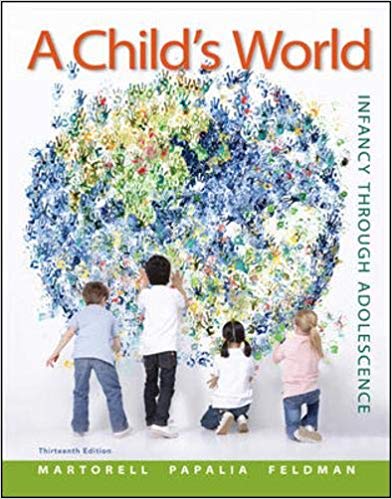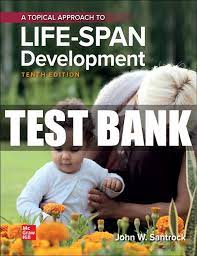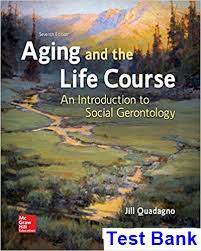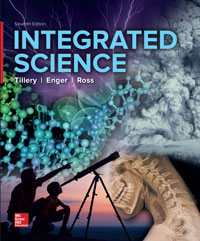Description
Test Bank For A Child’s World Infancy Through Adolescence 13th Edition By Gabriela Martorell
Chapter 03
Forming a New Life: Conception, Heredity, and Environment
Multiple Choice Questions
1. Bronfenbrenner’s _____ approach examines the layers of social systems and how these layers interact.
A. interactionist
B. bioecological
C. behaviorist
D. cognitive
refer to page 60
APA LO: 1.2
Bloom’s Taxonomy: Remember
Connect LO: 3.1: Describe how conception normally occurs, and how beliefs about conception changed.
Learn Smart LO: Conceiving new life.
2. Which of the following factors can have vast consequences on a child’s development?
A. Whether the birth comes about through normal or extraordinary means
B. Whether the birth is welcome or unwanted
C. How old the parents are when the child is conceived or adopted
D. All of the above
refer to page 60
APA LO: 1.2
Bloom’s Taxonomy: Remember
Connect LO: 3.1: Describe how conception normally occurs, and how beliefs about conception changed.
Learn Smart LO: Conceiving new life.
3. ______ suggested that the production of male babies was the natural order of things and that a female came about only if development was disturbed.
A. Bronfenbrenner.
B. Aristotle.
C. Skinner.
D. Mendel.
refer to page 61
APA LO: 1.2
Bloom’s Taxonomy: Remember
Connect LO: 3.1: Describe how conception normally occurs, and how beliefs about conception changed.
Learn Smart LO: Conceiving new life.
4. The union of sperm and ovum to produce a zygote is known as
A. the two-seed theory.
B. ovulation.
C. attachment.
D. fertilization.
refer to page 61
APA LO: 5.2
Bloom’s Taxonomy: Remember
Connect LO: 3.1: Describe how conception normally occurs, and how beliefs about conception changed.
Learn Smart LO: Recall the process of fertilization.
5. In fertilization, the male and the female gametes combine to create a single cell called a(n) _____, which then duplicates itself again and again to become a baby.
A. zygote
B. ovum
C. sperm
D. follicle
refer to page 61
APA LO: 1.2
Bloom’s Taxonomy: Remember
Connect LO: 3.1: Describe how conception normally occurs, and how beliefs about conception changed.
Learn Smart LO: Recall the definition of zygote.
6. Ovulation refers to the
A. fertilization of an ovum by a sperm.
B. expulsion of an ovum from the ovary.
C. passage of an ovum through the vagina and out of the woman’s body.
D. absorption of an ovum by the woman’s white blood cells.
refer to page 61
APA LO: 1.2
Bloom’s Taxonomy: Remember
Connect LO: 3.1: Describe how conception normally occurs, and how beliefs about conception changed.
Learn Smart LO: Recall the process of fertilization.
7. Fertilization usually takes place in the _____ as the ovum make the trip from the ovary to the uterus.
A. womb
B. fallopian tube
C. ovaries
D. cervix
refer to page 61
APA LO: 1.2
Bloom’s Taxonomy: Remember
Connect LO: 3.1: Describe how conception normally occurs, and how beliefs about conception changed.
Learn Smart LO: Recall the process of fertilization.
8. Sperm are produced in the _____ at a rate of several hundred million a day and are ejaculated in the semen during sexual climax.
A. ovary
B. cervix
C. testes
D. uterus
refer to page 61
APA LO: 1.2
Bloom’s Taxonomy: Remember
Connect LO: 3.1: Describe how conception normally occurs, and how beliefs about conception changed.
Learn Smart LO: Recall the process of fertilization.
9. Daniel and Nellie are hoping to maximize Nellie’s chances of becoming pregnant. When should they have intercourse?
A. between the 6th and 21st days of the menstrual cycle
B. 5 days after the onset of ovulation
C. 14 days after the onset of menstruation
D. 28 days after the onset of menstruation
refer to page 61
APA LO: 1.2
Bloom’s Taxonomy: Apply
Connect LO: 3.1: Describe how conception normally occurs, and how beliefs about conception changed.
Learn Smart LO: Recall the process of fertilization.
10. Infertility is the inability to conceive after _____ months of trying to have a baby.
A. 3 to 6
B. 6 to 9
C. 9 to 12
D. 12 or more
refer to page 61
APA LO: 1.2
Bloom’s Taxonomy: Remember
Connect LO: 3.2: Understand what causes infertility, and the alternative ways of becoming parents.
Learn Smart LO: Recall infertility.
11. A common female cause of infertility is
A. underproduction of ova.
B. abnormal ova.
C. blockage of the fallopian tube.
D. disease of the uterine lining, which prevents implantation of the fertilized ovum.
refer to page 62
APA LO: 1.2
Bloom’s Taxonomy: Remember
Connect LO: 3.2: Understand what causes infertility, and the alternative ways of becoming parents.
Learn Smart LO: Recall causes of infertility.
12. The most common cause of infertility in men is
A. low sperm production.
B. impotence.
C. use of over-the-counter medications.
D. premature ejaculation.
refer to page 62
APA LO: 1.2
Bloom’s Taxonomy: Remember
Connect LO: 3.2: Understand what causes infertility, and the alternative ways of becoming parents.
Learn Smart LO: Recall causes of infertility.
13. Which of the following is NOT true about infertile couples?
A. A common cause in females is blockage of the fallopian tubes.
B. Drug therapy can sometimes correct the problem.
C. Hormone treatment may raise a man’s sperm count.
D. Surgical treatments are ineffective.
refer to page 62
APA LO: 1.2
Bloom’s Taxonomy: Understand
Connect LO: 3.2: Understand what causes infertility, and the alternative ways of becoming parents.
Learn Smart LO: Recall causes of infertility.
14. Dan and Fiona have decided to utilize technology to overcome their infertility problems. They opt for a procedure in which a mature ovum is surgically removed, fertilized in a laboratory dish, and then implanted in the woman’s uterus. This technique is called
A. artificial insemination.
B. in vitro fertilization.
C. gamete intrafallopian transfer.
D. zygote intrafallopian transfer.
refer to page 62
APA LO: 1.2
Bloom’s Taxonomy: Apply
Connect LO: 3.2: Understand what causes infertility, and the alternative ways of becoming parents.
Learn Smart LO: Recall Alternative ways to parenthood: Assisted reproductive technology.
15. Fred and Wilma have discovered that their infertility is due to Fred’s extremely low sperm count. In an attempt to get pregnant, Wilma has a doctor inject a collection of her husband’s sperm directly into her cervix. This procedure is called
A. in vitro fertilization.
B. sperm transfer.
C. artificial insemination.
D. ovum transfer.
refer to page 65
APA LO: 1.2
Bloom’s Taxonomy: Apply
Connect LO: 3.2: Understand what causes infertility, and the alternative ways of becoming parents.
Learn Smart LO: Recall Alternative ways to parenthood: Assisted reproductive technology.
16. Medical technology is now able to offer couples several methods of bypassing the normal process of conception. These methods include
A. ovum transfer.
B. artificial insemination.
C. in vitro fertilization.
D. all of the above.
refer to pages 62-66
APA LO: 1.2
Bloom’s Taxonomy: Remember
Connect LO: 3.2: Understand what causes infertility, and the alternative ways of becoming parents.
Learn Smart LO: Recall Alternative ways to parenthood: Assisted reproductive technology.
17. The science of genetics focuses on the
A. inherited factors that affect development.
B. effects of environmental influences on phenotypic development.
C. development of abnormal, rather than normal, behaviors and traits.
D. processes involved in fertilization.
refer to page 66
APA LO: 5.2
Bloom’s Taxonomy: Remember
Connect LO: 3.3: Understand which genetic mechanisms determine sex, physical appearance, and other characteristics.
Learn Smart LO: Recall the definition of genes.
18. Stacy wants to learn more about the sequence of base parts within DNA that determine inherited characteristics. Stacy is interested in
A. autosomes.
B. multifactorial transmission.
C. genome imprinting.
D. the genetic code.
refer to page 67
APA LO: 5.2
Bloom’s Taxonomy: Apply
Connect LO: 3.3: Understand which genetic mechanisms determine sex, physical appearance, and other characteristics.
Learn Smart LO: Recall the definition of genetic code.
19. The chemical that carries inherited instructions for the development of all cellular forms of life is called
A. a teratogenic substance.
B. adenosine monophosphate.
C. arachidonic acid.
D. deoxyribonucleic acid.
refer to page 67
APA LO: 5.2
Bloom’s Taxonomy: Remember
Connect LO: 3.3: Understand which genetic mechanisms determine sex, physical appearance, and other characteristics.
Learn Smart LO: Recall the definition of genes.
20. The _____ is the basic unit that determines inherited characteristics.
A. zygote
B. gene
C. follicle
D. gamete
refer to page 67
APA LO: 5.2
Bloom’s Taxonomy: Remember
Connect LO: 3.3: Understand which genetic mechanisms determine sex, physical appearance, and other characteristics.
Learn Smart LO: Recall the definition of genes.
21. Which of the following are made up of DNA (deoxyribonucleic acid)?
A. Gametes
B. Gymnosperm
C. Androsperm
D. Genes
refer to page 67
APA LO: 1.2
Bloom’s Taxonomy: Remember
Connect LO: 3.3: Understand which genetic mechanisms determine sex, physical appearance, and other characteristics.
Learn Smart LO: Recall the definition of genes.
22. How many pairs of chromosomes does a typically developing human being have?
A. 22
B. 23
C. 44
D. 46
refer to page 67
APA LO: 5.2
Bloom’s Taxonomy: Remember
Connect LO: 3.3: Understand which genetic mechanisms determine sex, physical appearance, and other characteristics.
Learn Smart LO: Recall the definition of chromosomes.
23. A cell that has divided through mitosis possesses _____ chromosomes, whereas a cell that has undergone meiosis possesses _____ chromosomes.
A. 23 pairs of ; 23
B. 46 pairs of ; 46
C. 23 ; 46
D. 23 chromosomes; 23 pairs of
refer to page 67
APA LO: 5.2
Bloom’s Taxonomy: Understand
Connect LO: 3.3: Understand which genetic mechanisms determine sex, physical appearance, and other characteristics.
Learn Smart LO: Recall the definition of chromosomes.
24. The process of cell division that produces copies of cells with 46 chromosomes is called
A. diffusion.
B. meiosis.
C. translocation.
D. mitosis.
refer to page 67
APA LO: 1.2
Bloom’s Taxonomy: Remember
Connect LO: 3.3: Understand which genetic mechanisms determine sex, physical appearance, and other characteristics.
Learn Smart LO: Recall the definition of mitosis.
25. Meiosis
A. results in two cells, each with 46 chromosomes.
B. reduces the number of chromosomes by half.
C. refers to the addition of an extra 21st chromosome.
D. is the process by which the egg and sperm combine.
refer to page 67
APA LO: 1.2
Bloom’s Taxonomy: Remember
Connect LO: 3.3: Understand which genetic mechanisms determine sex, physical appearance, and other characteristics.
Learn Smart LO: Recall the definition of meiosis.





Be the first to review “Test Bank For A Child’s World Infancy Through Adolescence 13th Edition By Gabriela Martorell”